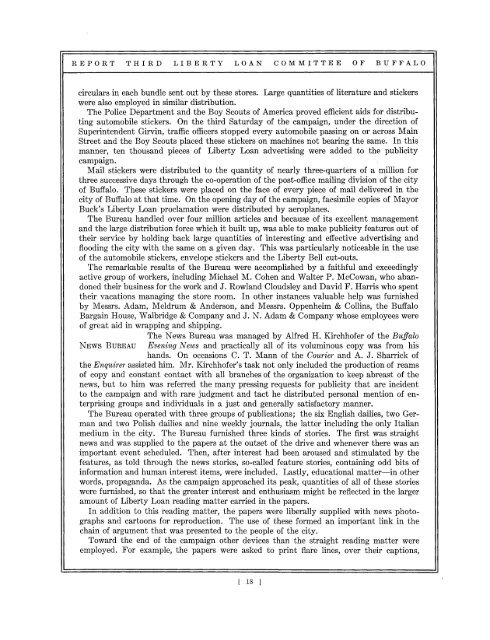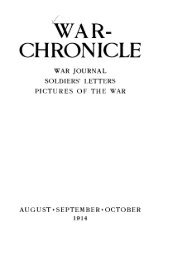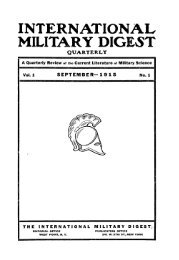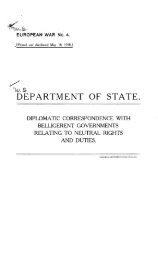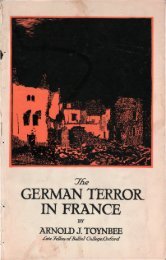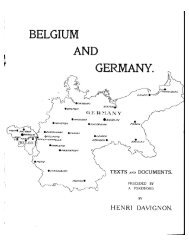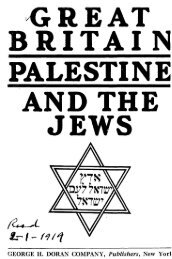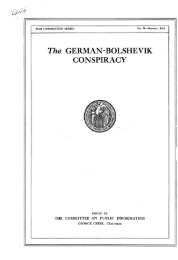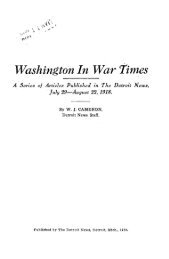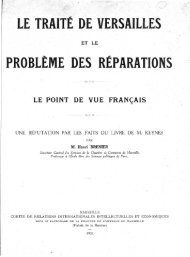fkUl NEW YORK
fkUl NEW YORK
fkUl NEW YORK
You also want an ePaper? Increase the reach of your titles
YUMPU automatically turns print PDFs into web optimized ePapers that Google loves.
REPORT THIRD LIBERTY LOAN COMMITTEE OF BUFFALO<br />
circulars in each bundle sent out by these stores. Large quantities of literature and stickers<br />
were also employed in similar distribution.<br />
The Police Department and the Boy Scouts of America proved efficient aids for distributing<br />
automobile stickers. On the third Saturday of the campaign, under the direction of<br />
Superintendent Girvin, traffic officers stopped every automobile passing on or across Main<br />
Street and the Boy Scouts placed these stickers on machines not bearing the same. In this<br />
manner, ten thousand pieces of Liberty Loan advertising were added to the publicity<br />
campaign.<br />
Mail stickers were distributed to the quantity of nearly three-quarters of a million for<br />
three successive days through the co-operation of the post-office mailing division of the city<br />
of Buffalo. These stickers were placed on the face of every piece of mail delivered in the<br />
city of Buffalo at that time. On the opening day of the campaign, facsimile copies of Mayor<br />
Buck's Liberty Loan proclamation were distributed by aeroplanes.<br />
The Bureau handled over four million articles and because of its excellent management<br />
and the large distribution force which it built up, was able to make publicity features out of<br />
their service by holding back large quantities of interesting and effective advertising and<br />
flooding the city with the same on a given day. This was particularly noticeable in the use<br />
of the automobile stickers, envelope stickers and the Liberty Bell cut-outs.<br />
The remarkable results of the Bureau were accomplished by a faithful and exceedingly<br />
active group of workers, including Michael M. Cohen and Walter P. McCowan, who abandoned<br />
their business for the work and J. Rowland Cloudsley and David F. Harris who spent<br />
their vacations managing the store room. In other instances valuable help was furnished<br />
by Messrs. Adam, Meldrum & Anderson, and Messrs. Oppenheim & Collins, the Buffalo<br />
Bargain House, Walbridge & Company and J. N. Adam & Company whose employees were<br />
of great aid in wrapping and shipping.<br />
The News Bureau was managed by Alfred H. Kirchhofer of the Buffalo<br />
<strong>NEW</strong>S BUREAU Evening News and practically all of its voluminous copy was from his<br />
hands. On occasions C. T. Mann of the Courier and A. J. Sharrick of<br />
the Enquirer assisted him. Mr. Kirchhofer's task not only included the production of reams<br />
of copy and constant contact with all branches of the organization to keep abreast of the<br />
news, but to him was referred the many pressing requests for publicity that are incident<br />
to the campaign and with rare judgment and tact he distributed personal mention of enterprising<br />
groups and individuals in a just and generally satisfactory manner.<br />
The Bureau operated with three groups of publications; the six English dailies, two German<br />
and two Polish dailies and nine weekly journals, the latter including the only Italian<br />
medium in the city. The Bureau furnished three kinds of stories. The first was straight<br />
news and was supplied to the papers at the outset of the drive and whenever there was an<br />
important event scheduled. Then, after interest had been aroused and stimulated by the<br />
features, as told through the news stories, so-called feature stories, containing odd bits of<br />
information and human interest items, were included. Lastly, educational matter—in other<br />
words, propaganda. As the campaign approached its peak, quantities of all of these stories<br />
were furnished, so that the greater interest and enthusiasm might be reflected in the larger<br />
amount of Liberty Loan reading matter carried in the papers.<br />
In addition to this reading matter, the papers were liberally supplied with news photographs<br />
and cartoons for reproduction. The use of these formed an important link in the<br />
chain of argument that was presented to the people of the city.<br />
Toward the end of the campaign other devices than the straight reading matter were<br />
employed. For example, the papers were asked to print flare lines, over their captions,<br />
[ 18 ]


